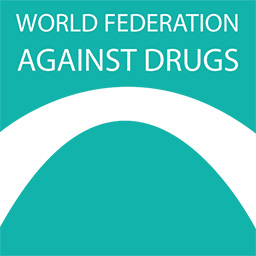During the 16 days of activism, which started on November 25th on the International Day for the Elimination of Violence Against Women and will end on December 10th on the International Day of Human Rights, the WFAD Gender Working Group is publishing statements every day highlighting issues faced by different specific populations while continuing to highlight the topic of this year: UNiTE! Activism to End Violence against Women and Girls
Gender-based violence and substance use are strongly interlinked. The negative health impact the experienced violence has on the survivor can lead to substance misuse. Additionally, substance use perpetrator often accelerates violence. Therefore, each statement, calling for preventing and eradicating gender-based violence, also calls for substance use prevention as well as sensitised and comorbid treatment.

Gender-based violence, such as sexual, psychological, and economic violence, is perpetrated against girls and boys and is considered a crime. It “undermines the health, dignity, security, and autonomy of its victims” (Save the Children n.d.). Experiencing violence at a young or adolescent age has an immense impact on the development of the young person and often contributes to the end of their childhood. Particularly adolescence “is a period of physical, psychological, cognitive, and behavioural growth that is marked by several developmental milestones, including increased independence, new relationships, risk-taking, and the development of a sense of identity” (Stark, Seff, Reis 2020). Negative life experiences, such as violence, can influence opportunities in the future.
Violence against young persons is often different depending on gender. Violence against girls includes sexual violence, child marriage, sexual harassment, female genital mutilation, intimate partner violence, trafficking, sexual exploitation, and abuse. The violence leads to serious short- and long-term effects, such as physical injuries, sexually transmitted infections, forced and unwanted pregnancies, and a greater risk of maternal mortality (Save the Children n.d.). Global statistic showcase that the threat is prevalent as “15 million girls are married before the age of 18 each year; 30 million girls are at risk of female genital mutilation in the next decade, and; 1 in 3 girls and women live in countries where marital rape is not an explicit crime”. In cases of conflict settings, girls are at a heightened risk of the vulnerability of violence and limited access to opportunities including education, health care, and legal status.
Gender-based violence, such as sexual violence, trafficking, and exploitation, is also perpetrated against boys. However, stigmatisation leads to underreporting of cases. Boys associated with alleged crimes often do not receive proper legal support, are kept with adult prisoners, or live in conditions that are against international standards for juvenile justice. The risk of exploitation increases in conflict settings where adolescent boys are often targeted and recruited to fight (ibid).
As mentioned earlier, violence against young persons has an immense impact on the development of the child. It can lead to severe injuries, impair brain and nervous system development, and contribute to a wide range of non-communicable diseases as they grow older. The violence and other adversities experienced by children can impact their school attendance, finding and keeping a job, and a heightened risk for later victimisation and [self-directed] violence, which can impact the next generations. It can also result in negative coping and health risk behaviours where children with adversities engage in the misuse of alcohol and drugs to cope. They also face higher rates of anxiety, depression, other mental health problems, and suicide (WHO 2020).
Therefore, it is important to continue global efforts to prevent and eradicate violence against young persons, with a gender-sensitive focus. Each child has a right to be protected from gender-based violence and grow up in a safe environment. Families, communities, and other key stakeholders need to be educated and included in awareness-raising activities while policies need to be created and measures implemented when the law is broken. Evidence-based practices should be promoted and advocated for because it is scientifically proven that the “use of systematic decision-making processes or provision of [evidence-based] services […] consistently improve measurable outcomes” (Evidence Based Practice Institute 2012).
References
- Evidence Based Practice Institute, 2012; http://depts.washington.edu/ebpi/
- Save the Children. n.d. Gender-Based Violence Creates an Unequal World for Children. https://www.savethechildren.org/us/charity-stories/gender-based-violence
- Stark, Lindsey, Seff, Ilana, and Reis, Chen. 2020. Gender-based violence against adolescent girls in humanitarian settings: a review of the evidence. The Lancet Child & Adolescent Health. Volume 5, Issue 3, P210-222. https://www.thelancet.com/journals/lanchi/article/PIIS2352-4642(20)30245-5/fulltext
- WHO. 2020. Violence Against Children. https://www.who.int/news-room/fact-sheets/detail/violence-against-children


Leave a Reply
You must be logged in to post a comment.